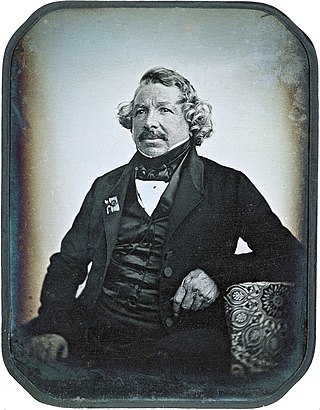
Daguerreotype was the first publicly available photographic process; it was widely used during the 1840s and 1850s. "Daguerreotype" also refers to an image created through this process.

Astrophotography, also known as astronomical imaging, is the photography or imaging of astronomical objects, celestial events, or areas of the night sky. The first photograph of an astronomical object was taken in 1840, but it was not until the late 19th century that advances in technology allowed for detailed stellar photography. Besides being able to record the details of extended objects such as the Moon, Sun, and planets, modern astrophotography has the ability to image objects outside of the visible spectrum of the human eye such as dim stars, nebulae, and galaxies. This is accomplished through long time exposure as both film and digital cameras can accumulate and sum photons over long periods of time or using specialized optical filters which limit the photons to a certain wavelength.

Yerkes Observatory is an astronomical observatory located in Williams Bay, Wisconsin, United States. The observatory was operated by the University of Chicago Department of Astronomy and Astrophysics from its founding in 1897 to 2018. Ownership was transferred to the non-profit Yerkes Future Foundation (YFF) in May 2020, which began restoration and renovation of the historic building and grounds. Re-opening for public tours and programming began May 27, 2022.

Annie Jump Cannon was an American astronomer whose cataloging work was instrumental in the development of contemporary stellar classification. With Edward C. Pickering, she is credited with the creation of the Harvard Classification Scheme, which was the first serious attempt to organize and classify stars based on their temperatures and spectral types. She developed the mnemonic "Oh! Be A Fine Girl — Kiss Me!" used by students to memorize the spectral classification of stars. She was nearly deaf throughout her career after 1893, as a result of scarlet fever. She was a suffragist and a member of the National Women's Party.

Alvan Graham Clark was an American astronomer and telescope-maker.
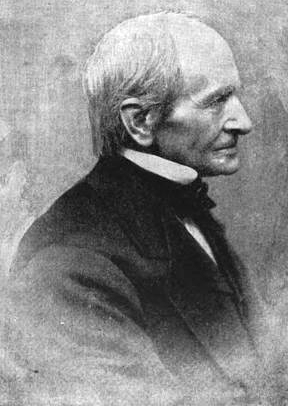
Alvan Clark, born in Ashfield, Massachusetts, was an American astronomer and telescope maker. He was the descendant of a Cape Cod whaling family of English ancestry.

The Harvard College Observatory (HCO) is an institution managing a complex of buildings and multiple instruments used for astronomical research by the Harvard University Department of Astronomy. It is located in Cambridge, Massachusetts, United States, and was founded in 1839. With the Smithsonian Astrophysical Observatory, it forms part of the Center for Astrophysics | Harvard & Smithsonian.

Markree Observatory was an astronomical observatory in County Sligo, Ireland. The asteroid 9 Metis was discovered from this observatory in 1848 by Cooper's assistant Andrew Graham using a comet seeker telescope. The observatory was also home to the largest refractor of the early 1830s, which had a 13.3-inch (340 mm) aperture Cauchoix of Paris lens; the largest in the world at that time. The observatory also housed a number of instruments and was operated to varying degrees throughout the 19th century.

John Adams Whipple was an American inventor and early photographer. He was the first in the United States to manufacture the chemicals used for daguerreotypes. He pioneered astronomical and night photography. He was a prize-winner for his extraordinary early photographs of the moon and he was the first to produce images of stars other than the sun. Among those was the star Vega and the Mizar-Alcor stellar sextuple system, which was thought to be a double star until 2009.
Stull Observatory is an astronomical observatory owned and operated by Alfred University located in Alfred, New York (USA) and named after John Stull, who helped establish the observatory in 1966. It is notable for housing seven independently housed telescopes ranging in size from 8 to 32 inches. The largest, the Austin-Fellows 32 inch Newtonian Reflector is tied with the Vassar College Class of 1951 Observatory for the rank of second largest optical telescope in New York state after the 40 inch telescope at SUNY Oneonta College Observatory. Telescopes at the observatory are regularly opened to the public. The observatory is also used for those pursuing a minor in astronomy or a concentration in astrophysics.
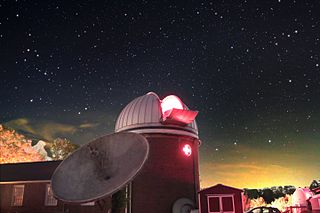
Custer Observatory is an astronomical observatory owned and operated by Custer Institute. Located in Southold, New York (US), facing Peconic Bay and Shelter Island, Custer's location has some of the darkest skies on Long Island.
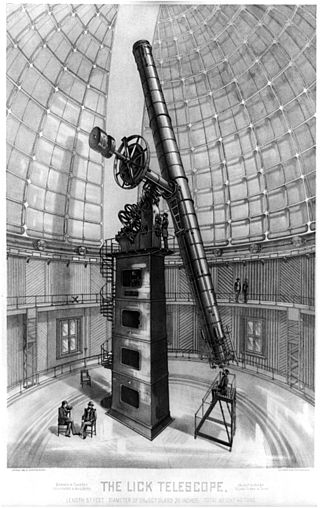
Alvan Clark & Sons was an American maker of optics that became famous for crafting lenses for some of the largest refracting telescopes of the 19th and early 20th centuries. Founded in 1846 in Cambridgeport, Massachusetts, by Alvan Clark, and his sons George Bassett Clark (1827–1891) and Alvan Graham Clark (1832–1897). Five times, the firm built the largest refracting telescopes in the world. The Clark firm gained "worldwide fame and distribution", wrote one author on astronomy in 1899.

A telescope is a device used to observe distant objects by their emission, absorption, or reflection of electromagnetic radiation. Originally meaning only an optical instrument using lenses, curved mirrors, or a combination of both to observe distant objects, the word telescope now refers to a wide range of instruments capable of detecting different regions of the electromagnetic spectrum, and in some cases other types of detectors.
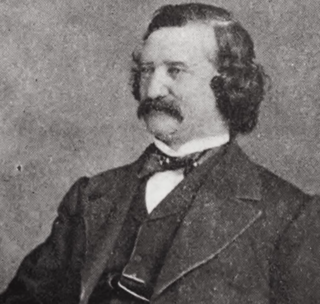
Thomas Hoyne was elected Mayor of Chicago in 1876, but his election was later declared null and void by a Circuit Court. Prior to 1876, Hoyne had led a political career in which he had occupied numerous state and municipal offices.
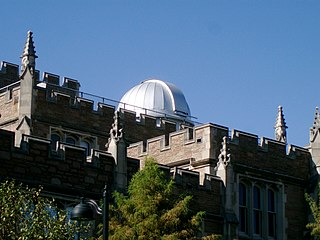
Crow Observatory is a historic observatory housed in the Crow Hall in the Physics Department on the Danforth Campus of Washington University in St. Louis. The historic telescope is still in use, and the observatory is open to the public.

The Detroit Observatory is located on the corner of Observatory and Ann streets in Ann Arbor, Michigan. It was built in 1854, and was the first scientific research facility at the University of Michigan and one of the oldest observatories of its type in the nation. It was designated a Michigan State Historic Site in 1958 and placed on the National Register of Historic Places in 1973.

Amasa Holcomb (1787–1875) was an American farmer, surveyor, civil engineer, businessman, politician, and manufacturer of surveying instruments and telescopes. From instruments he made he observed the total solar eclipse of June 16, 1806. He made astronomical computations from his observations and published almanacs for the partial solar eclipses of 1807 and 1808 from his work. An asteroid, 45512 Holcomb, was named after him.

George Edward Archibald Augustus FitzGeorge Hamilton was a British Army officer during the First World War and a distant relative of the British royal family. He was the only son of Sir Archibald Hamilton, 5th Baronet and Olga FitzGeorge, and was the heir to the Hamilton baronetcies of Trebinshun House and Marlborough House.




















